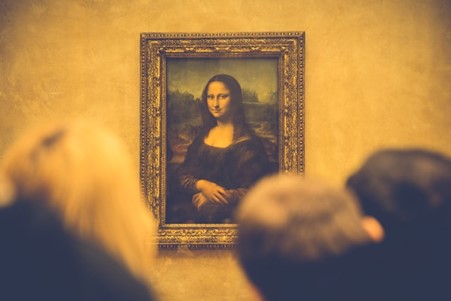Robert Rogal owns and operates the Ro Gallery in New York. In the following article, Robert Rogal discusses record revenue with art auctioneers in 2022, and how this could be a turning point for the art industry.
Following two years of tepid sales in the arts, auctioneers around the world are reporting a major upswing in profits, with first-half revenues breaking previous records. Although the numbers may seem unbelievable, they’re the culmination of recent developments in the market and a year of consignments like no other.
With Christie’s reporting more than $4 billion in first-half revenue, it begs the question of why 2022 looks set to be the best year in art dealing in recent history. Today Robert Rogal of RoGallery explores some of the trends driving these sales and break down how auctioneers plan to make 2022 a stand-out for the art world.
Advanced Digital Sales Technology is Driving Industry Success
At the start of the COVID-19 pandemic, art houses around the world began searching for effective ways to pivot away from traditional auction spaces toward safe digital sales in line with health regulations. Today, now that the pandemic is reaching its conclusion, these advanced sales technologies are continuing to drive market success says Robert Rogal.
One of the biggest reasons for this is that they’ve allowed for a much wider audience to participate in sales. In the past, auctions were largely inaccessible to anyone outside of the wealthy elite who could afford to pay for travel to an exclusive event. With digital sales, anyone with an Internet connection can take part in the bidding process from the comfort of their own home explains Robert Rogal of RoGallery.
The other benefit of digital sales technology is that it’s allowed auctioneers to reach a global audience. In the past, most sales were localized, with only a small number of buyers from outside the immediate area taking part. Now, with digital sales, buyers from all around the world can take part in the bidding process, no matter where the auction is taking place.
Robert Rogal says that this global reach has had a major impact on the way auctioneers do business. It’s allowed them to tap into new markets and sell to a much wider range of buyers. As a result, art galleries are seeing a significant increase in the number of global buyers taking part in sales and a corresponding increase in prices.

 The Growth of High-Value NFTs is Driving Digital Sales
The Growth of High-Value NFTs is Driving Digital Sales
One of the most significant drivers of the recent increase in auction revenues is the rise of high-value non-fungible tokens (NFTs). NFTs are digital assets that are stored on a blockchain and can represent anything from a piece of artwork to a piece of digital real estate explains Robert Rogal of RoGallery.
In the past year, we’ve seen a major increase in the number of NFTs being sold at auction, as well as a rise in their overall value. For example, Beeple’s Everydays: The First 5,000 Days sold for a record-breaking $69 million, becoming the most expensive NFT on record.
This is largely due to the fact that they’ve become increasingly popular as a way to invest in digital assets. Unlike traditional investments, NFTs are unique and can’t be replicated, which makes them a much more secure investment explains Robert Rogal.
What’s more, NFTs have also been gaining popularity as a way to collect and trade digital assets. They can be easily stored and transferred online, which makes them much more convenient than physical assets. As a result of this growing popularity, NFTs have become some of the most valuable assets being sold at auction explains Robert Rogal of RoGallery.
Luck Has Graced Auction Houses with Some of the Most Valuable Collections
There’s no getting around the fact that 2022 has been an especially lucky year for art dealers. While digital sales and NFTs have helped to drive revenue, the specific art that’s sold has certainly played a role in how revenue much the industry has earned. For example, Christie’s was able to market and sell some of the most expensive works in the world, including:
- Shot Sage Blue Marilyn (1964) and Flowers (1964) by Andy Warhol
- Venere Sopra Gaeta (1988) by Twombly
- Le Parlement, soleil couchant (1900-03) by Claude Monet
- Untitled (Shades of Red) (1961) by Mark Rothko
• Number 31 (1949) by Jackson Pollock - Champs près des Alpilles (1889) by Vincent Van Gogh
- Tête de femme (Fernande) (1909) by Pablo Picasso
- Washington Crossing the Delaware (1851) by Emanuel Leutze
The sheer size and quality of this year’s consignments have undoubtedly helped art houses around the world earn more revenue than ever before explains Robert Rogal of RoGallery.
The Bottom Line
All in all, the art world is in a very good place right now. Auctioneers are seeing record revenues, thanks to a combination of factors, including the growth of digital sales, the rise of NFTs, and the luck of selling some of the most valuable collections in the world. While the year is not over yet, it’s safe to say that 2022 will be one of the most profitable in recent history.








